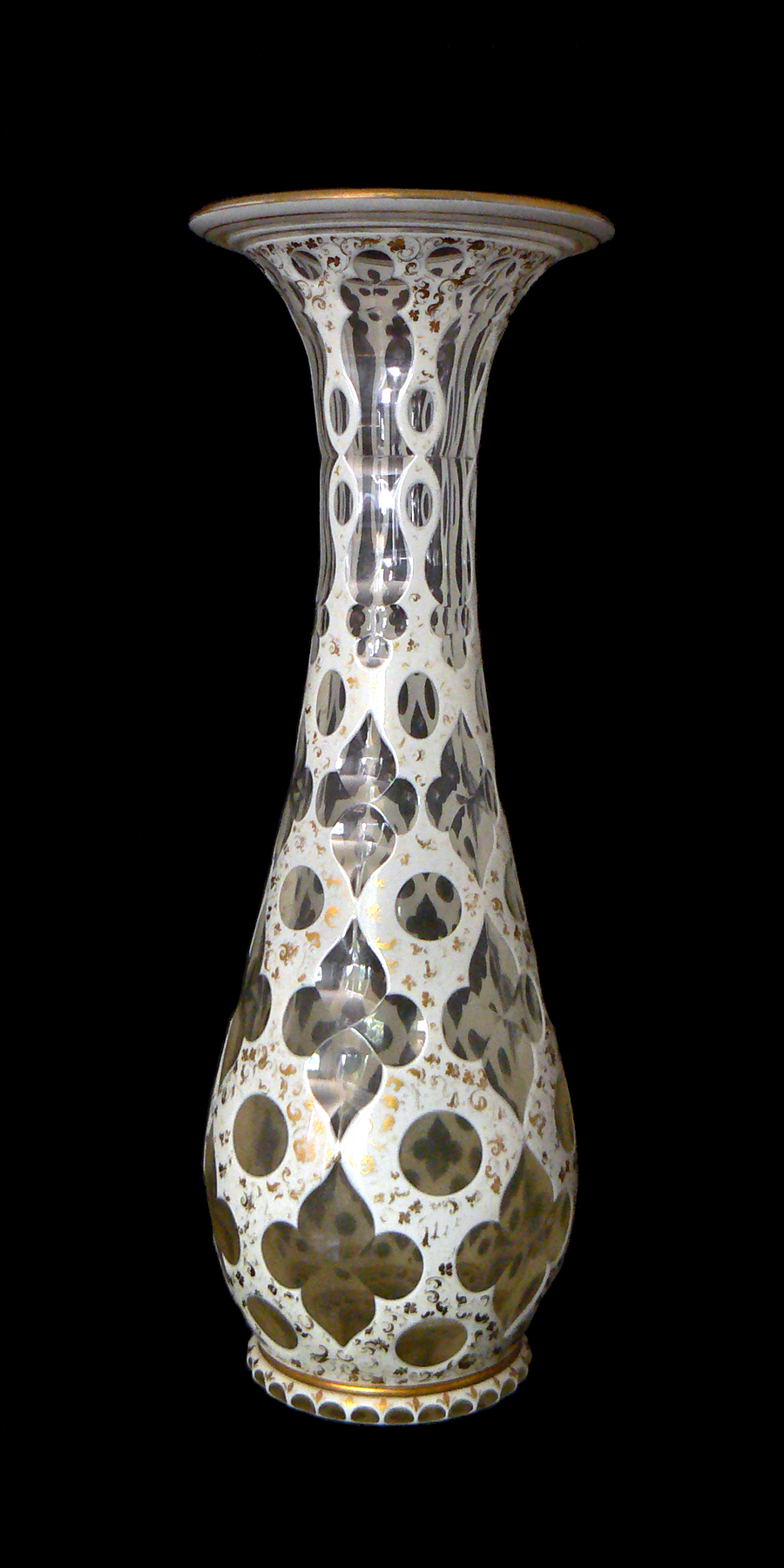
The vase pictured above is an example of mid-19th century Bohemian glass. Bohemia, an area of Central Europe that included the western portions of the present day Czech Republic, became known for its glassmaking around the mid-16th century, prior to which Venice was the premier center for glassware production. Bohemia possessed the necessary raw materials for glassmaking, and by the mid-19th century was producing many fine pieces for export. This piece is of a form called “cased” glass, meaning that it is made of more than one layer of glass, with the top layers cut away in patterns to expose the layers underneath.
The Longfellow family acquired quite a few pieces of Bohemian glassware, and Henry Wadsworth Longfellow had an appreciation for it. On March 4, 1848, Henry recorded in his journal that he “Went to town, saw some beautiful Bohemian glass. . . .”
This particular vase was a New Year’s present for Fanny Appleton Longfellow. Henry mentioned it in his January 1, 1849 journal entry, “Evening, a child’s party at Uncle Sam’s; music, dancing, and presents. Fanny’s, mine, and those for our children were the finest of all. Fanny’s a Bohemian glass vase, white with many facets. . . . “ Unfortunately for Fanny she missed the party, staying at home to look after her two sick children. In her own journal entry for that night, she wrote, “Henry came home at ten with brilliant accounts of the party & the beautiful presents for me & the chicks.” She received the vase the next day, noting in her journal, “The presents arrived. A magnificent Bohemian glass vase for me, with a charming bouquet in it. . . . ” After Fanny’s death in 1861, Henry prominently displayed the vase, often with flowers in it, on his study table.
